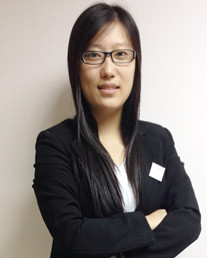托福阅读考察过的话题可不少,学术性文章也是大家最难以理解的,不过如果能积累足够的托福阅读资料相信对于大家一定有帮助,下面就结合托福阅读资料来看看这个问题。
大家在托福阅读文章之前可以先跳到最后一题(文章总结题)的位置看看那句对于文章总结的句子。对于大家从整体上把握文章的结构非常有帮助。
托福阅读真题再现:
版本一: 文明的起源。地方是美索不达米亚平原那边的。因为土地资源丰富,所以人口增多来开发,好像还提到了从其他地方得到青铜(bronze),所以很珍贵。一般不用来作为务农工具。有一题就是问为什么不用青铜器装农作物的。
版本二: 讲文明的起源,主要以两河流域为例。解释了文明的主要特点为有政治中心,自己的语言,金属工具等等。同事说美索不达米亚和埃及因为是何故所以进口bronze,价格昂贵作为首饰和装饰品。
解析: 本文讲文明发展史。主要讨论的是某文明发展的原因,主旨明确,结构清晰,每段首句为topic sentence的可能性较高。大家在阅读文章之前可以先跳到最后一题(文章总结题)的位置看看那句对于文章总结的句子。对于大家从整体上把握文章的结构非常有帮助。从文章结构与内容上,都非常接近TPO8的文章The Rise of Teotihucan
相关托福阅读资料:
Sumer
Sumer (from Akkadian ?umeru; Sumerian ki-en-?ir15, approximately "land of the civilized kings" or "native land"[note 1]) was an ancientcivilization and historical region in southern Mesopotamia, modern-day southern Iraq, during the Chalcolithic and Early Bronze Age. Although the earliest forms of writing in the region do not go back much further than c. 3500 BC, modern historians have suggested that Sumer was first permanently settled between c. 5500 and 4000 BC by a non-Semitic people who may or may not have spoken the Sumerian language (pointing to the names of cities, rivers, basic occupations, etc. as evidence).[1][2][3][4] These conjectured, prehistoric people are now called "proto-Euphrateans" or "Ubaidians",[5] and are theorized to have evolved from the Samarra culture of northern Mesopotamia (Assyria).[6][7][8][9] The Ubaidians were the first civilizing force in Sumer, draining the marshes for agriculture, developing trade, and establishing industries, including weaving, leatherwork, metalwork, masonry, and pottery.[5] However, some scholars such as Piotr Michalowski and Gerd Steiner, contest the idea of a Proto-Euphratean language or one substrate language. It has been suggested by them and others, that the Sumerian language was originally that of the hunter and fisher peoples, who lived in the marshland and the Eastern Arabia littoral region, and were part of theArabian bifacial culture.[10] Reliable historical records begin much later; there are none in Sumer of any kind that have been dated beforeEnmebaragesi (c. 26th century BC). Professor Juris Zarins believes the Sumerians were settled along the coast of Eastern Arabia, today's Persian Gulf region, before it flooded at the end of the Ice Age.[11] Sumerian literature speaks of their homeland being Dilmun.
Sumerologist Samuel Noah Kramer asserts "No people has contributed more to the culture of mankind than the Sumerians" and yet it is only comparatively recently that we have built up a knowledge of the existence of this ancient culture.[12] Sumerian civilization took form in theUruk period (4th millennium BC), continuing into the Jemdat Nasr and Early Dynastic periods. During the 3rd millennium BC, a close cultural symbiosis developed between the Sumerians (who spoke a language isolate) and the Semitic Akkadian speakers, which included widespreadbilingualism.[13] The influence of Sumerian on Akkadian (and vice versa) is evident in all areas, from lexical borrowing on a massive scale, tosyntactic, morphological, and phonological convergence.[13] This has prompted scholars to refer to Sumerian and Akkadian in the 3rd millennium BC as a sprachbund.[13] Sumer was conquered by the Semitic-speaking kings of the Akkadian Empire around 2270 BC (short chronology), but Sumerian continued as a sacred language. Native Sumerian rule re-emerged for about a century in the Third Dynasty of Ur (Sumerian Renaissance) of the 21st to 20th centuries BC, but the Akkadian language also remained in use. The Sumerian city of Eridu, on the coast of the Persian Gulf, was the world's first city, where three separate cultures fused - that of peasant Ubaidian farmers, living in mud-brick huts and practicing irrigation; that of mobile nomadic Semitic pastoralists living in black tents and following herds of sheep and goats; and that of fisher folk, living in reed huts in the marshlands, who may have been the ancestors of the Sumerians.[14]
The irrigated farming together with annual replenishment of soil fertility and the surplus of storable food in temple granaries created by this economy allowed the population of this region to rise to levels never before seen, unlike those found in earlier cultures of shifting cultivators. This much greater population density in turn created and required an extensive labour force and division of labour with many specialised arts and crafts. At the same time, historic overuse of the irrigated soils led to progressive salinisation, and a Malthusian crisis which led to depopulation of the Sumerian region over time, leading to its progressive eclipse by the Akkadians of middle Mesopotamia.
Sumer was also the site of early development of writing, progressing from a stage of proto-writing in the mid 4th millennium BC to writing proper in the 3rd millennium BC .

长沙新通外语金牌口语教师,毕业于国内重点211,985大学英语专业,英语专业八级。具备丰富的口语教学经验及人文社科知识基础,善于拓展学生口语思维,能通过浅显易懂的方式传递给学生,深受广大学生喜爱。
咨询时间:8:00~24:00
 400-618-8866
400-618-8866
咨询时间:8:00~24:00
扫一扫
立即报名

扫一扫
立即进站

想要获取更多考试培训信息,可以通过以下方式联系到距离您最近的新通教育;
1、拨打新通教育咨询热线:400-618-8866;
2、点击【立即咨询】 ,我们会有课程老师为你解答考试难题;
3、完成以下表单,轻松预约,预约获取定制学习方案的机会。